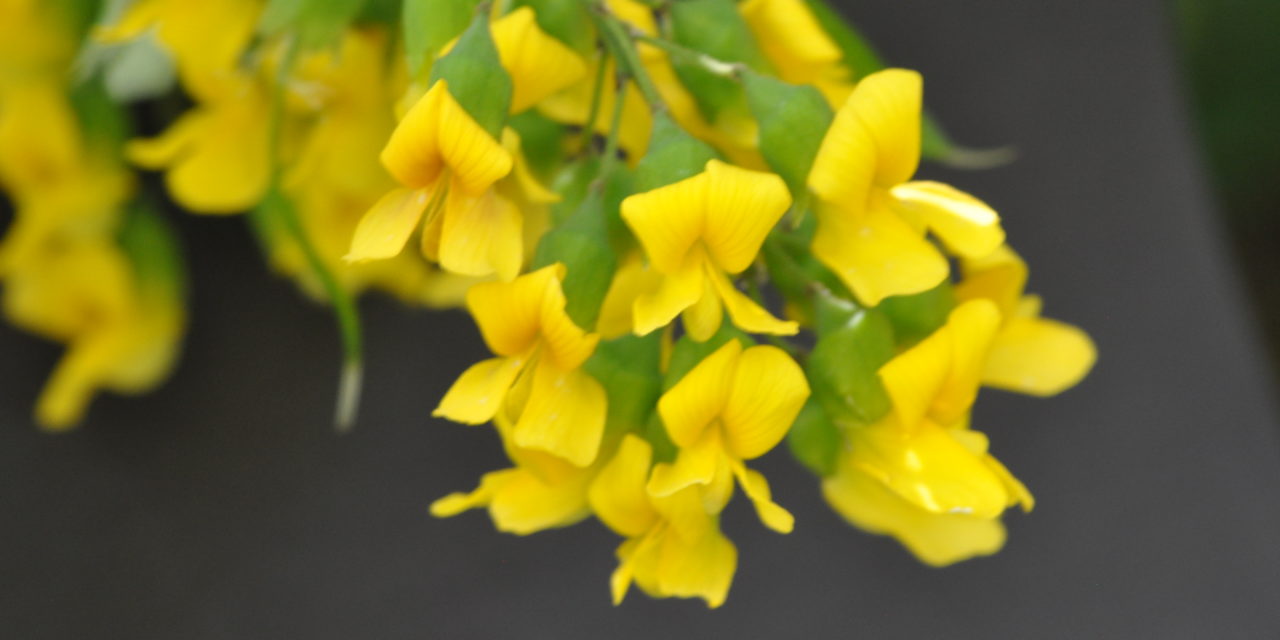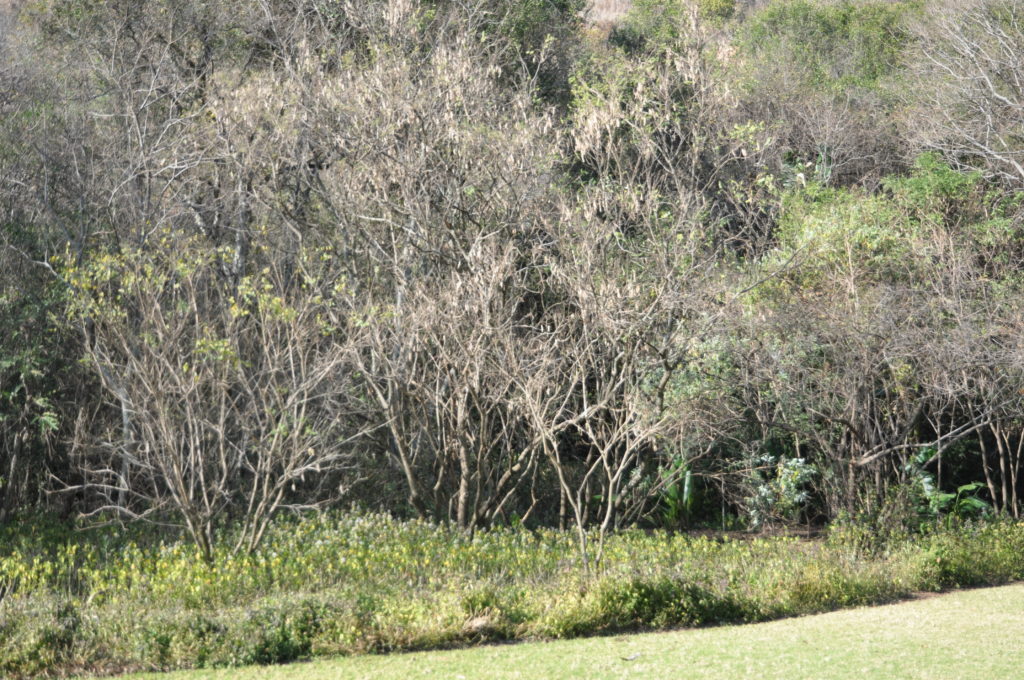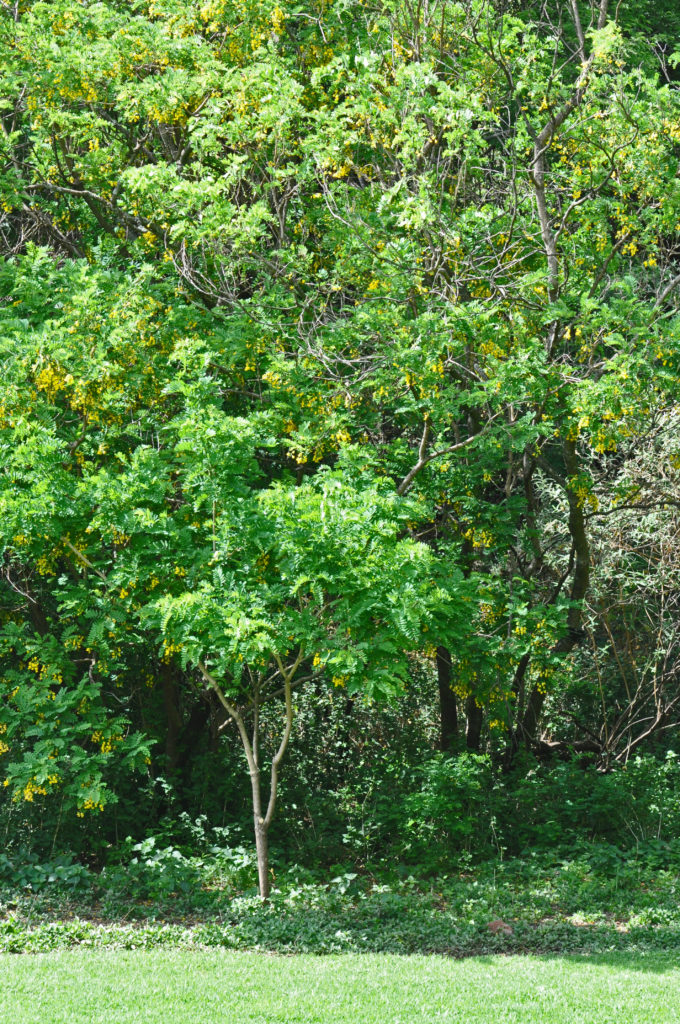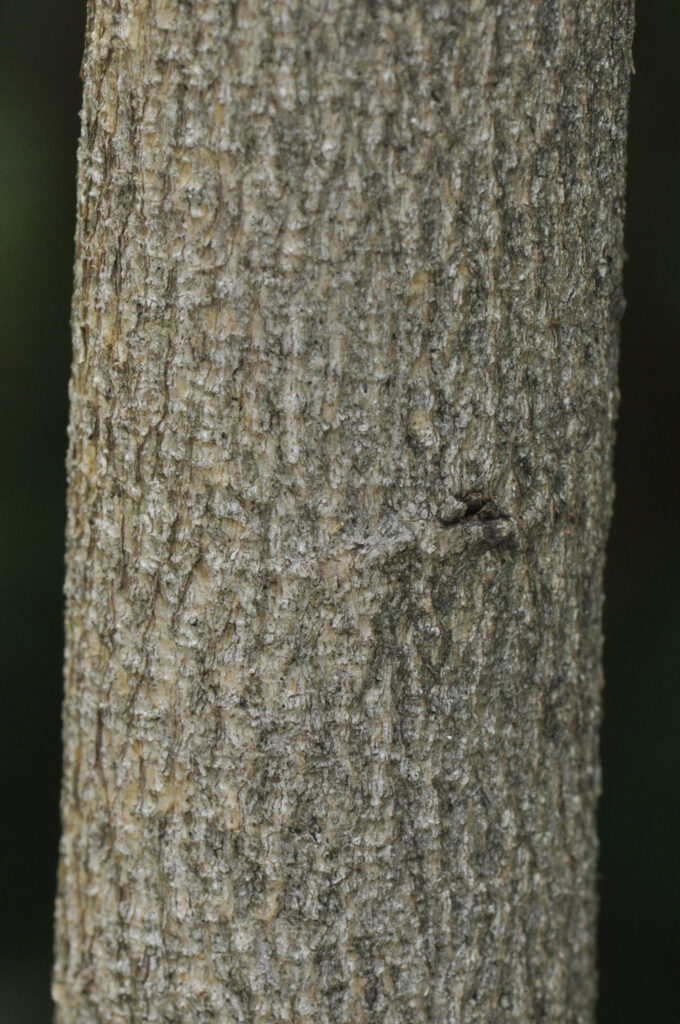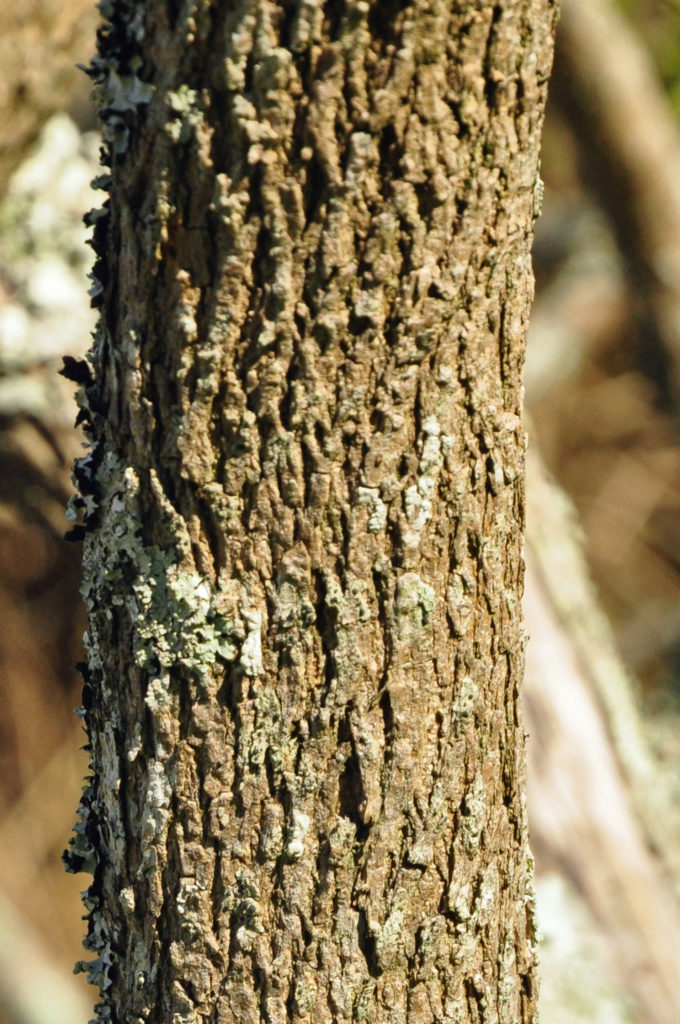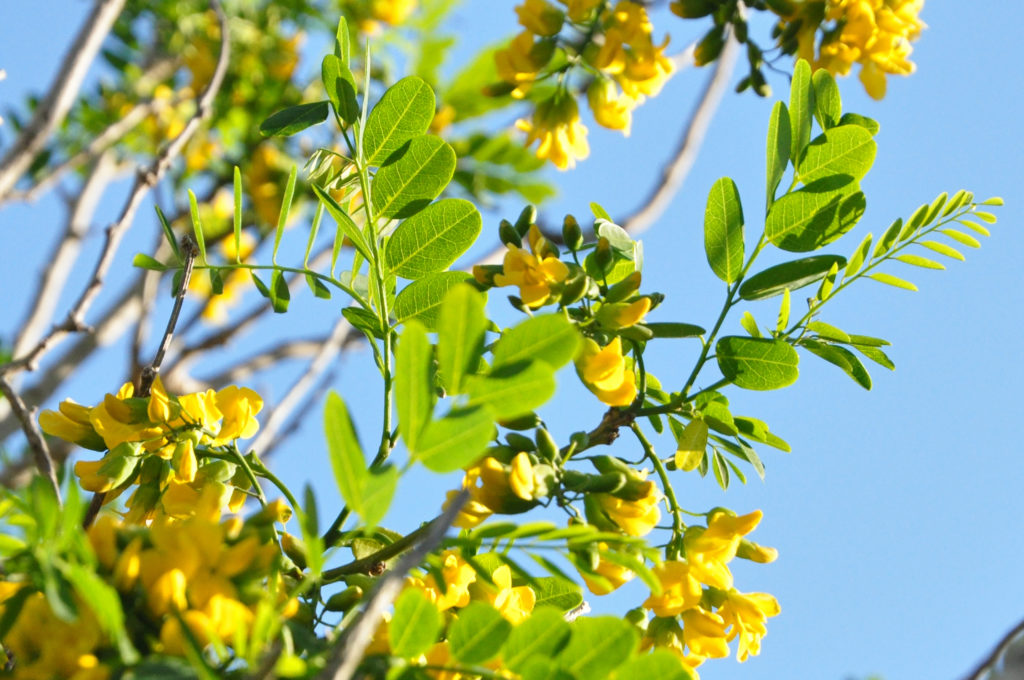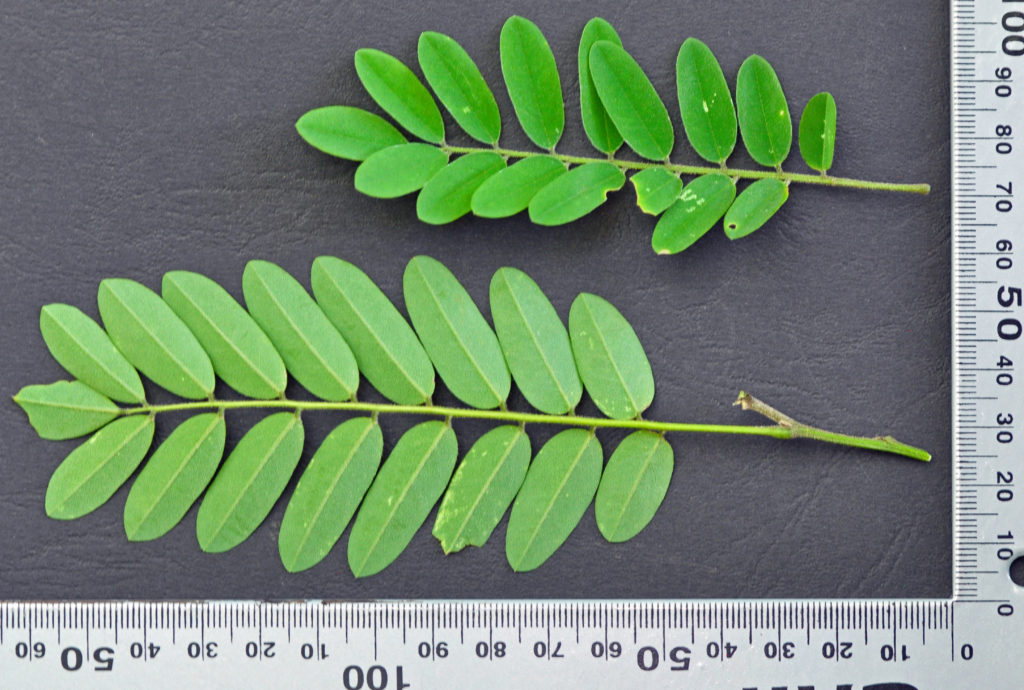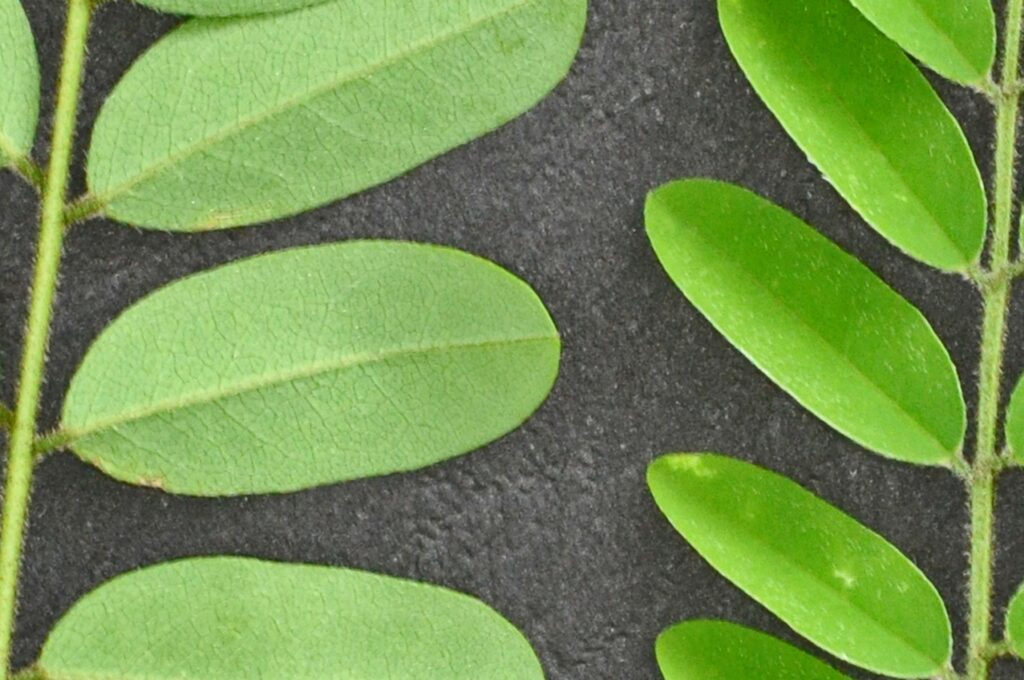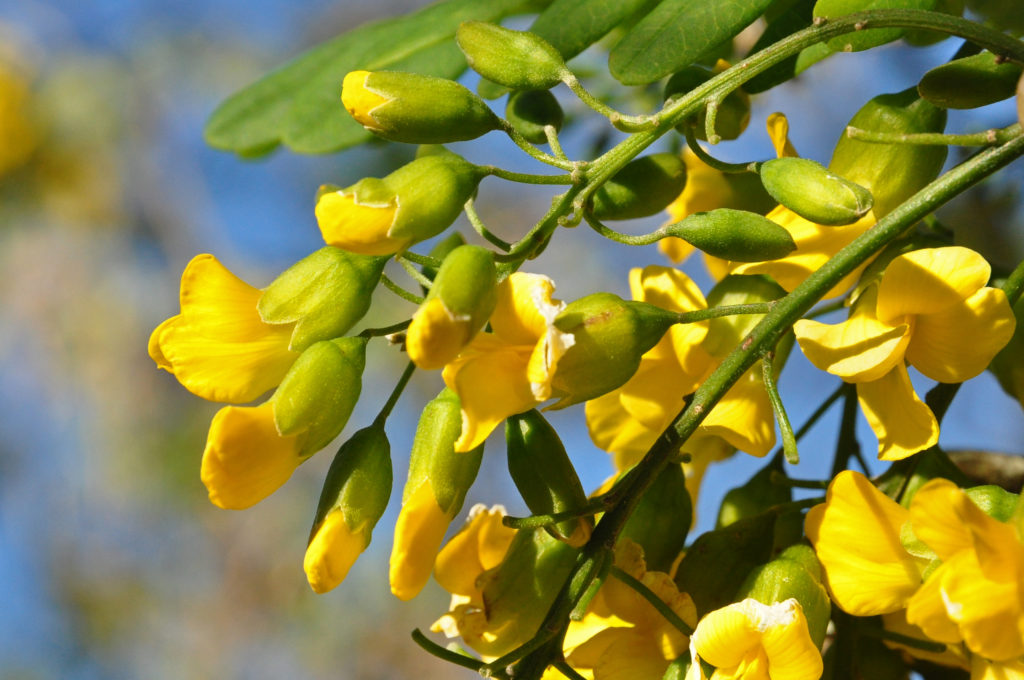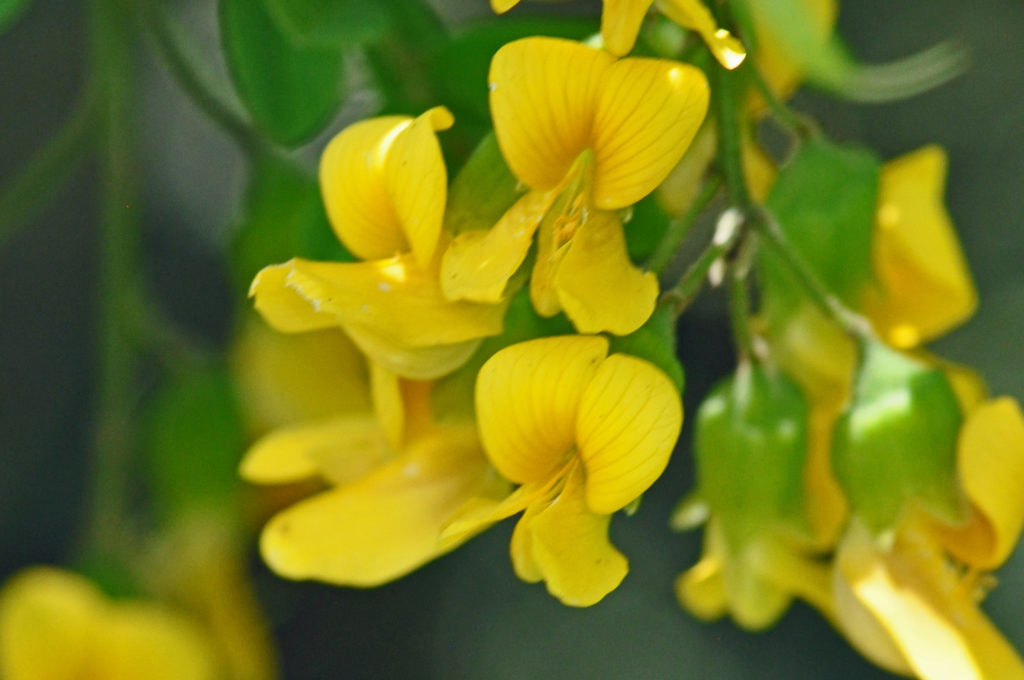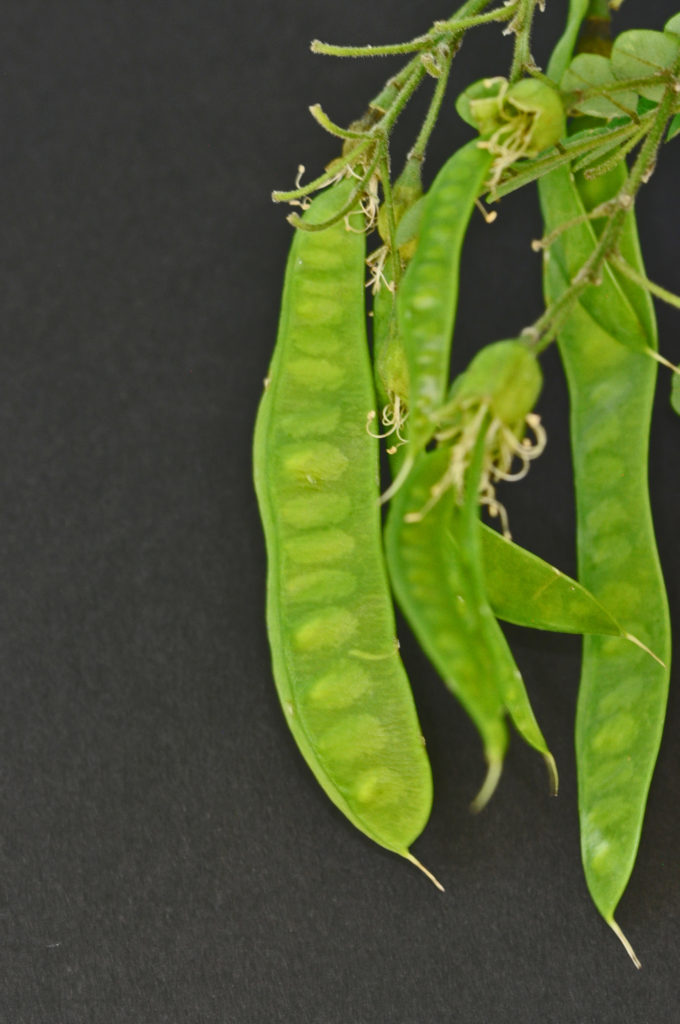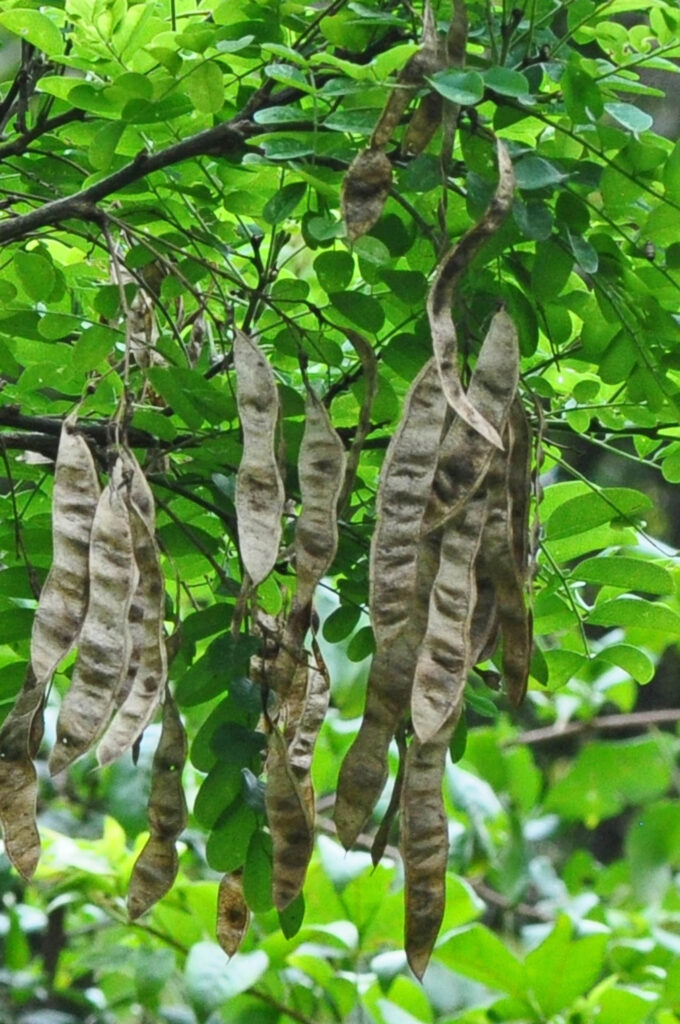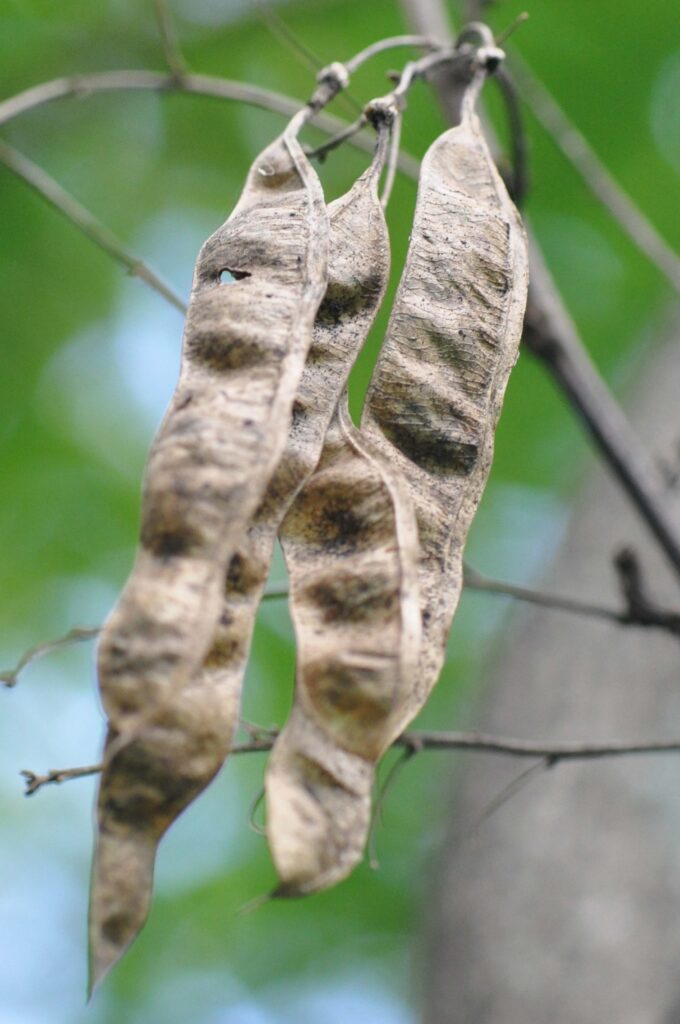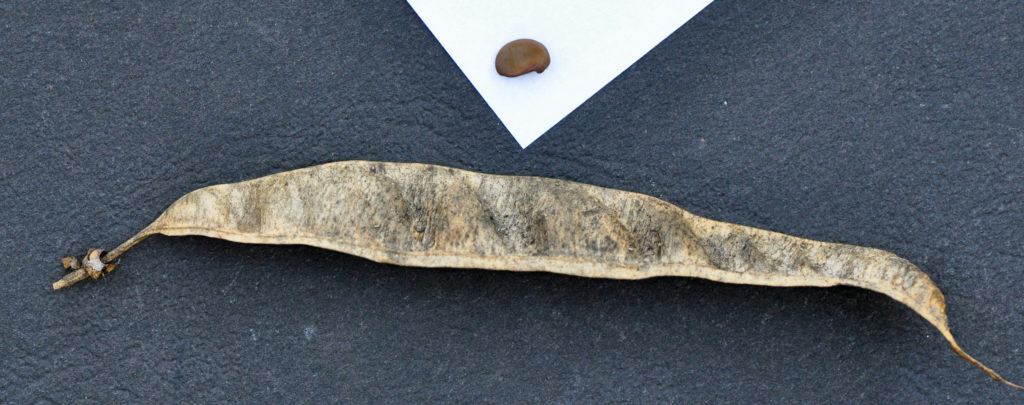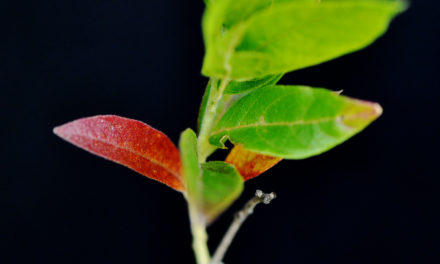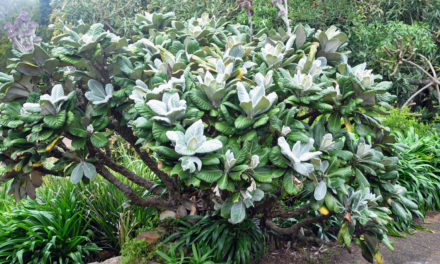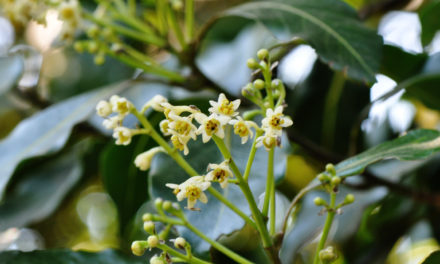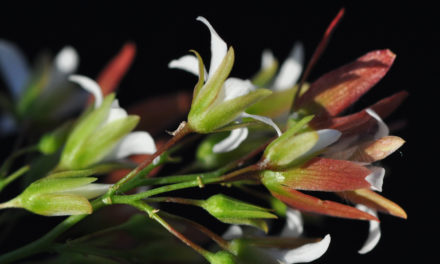General Info – summary
This Tree may be up to 15m high or a shrub. Bark ages to dark and rough. The imparipinnate light green Leaves have soft textured and entire leaflets + short, hairy petiolules. The rachis is hairy & grooved above. 5-merous, bright yellow zygomorphic Flowers are in racemes, with 10 stamens & a superior ovary. Ripe Fruit is a dark brown, pendulous, indehiscent, flattish papery pod with brown, oval, bean shaped seeds.
Description
Calpurnia aurea subsp. aurea
Previous Names: Calpurnia aurea subsp. sylvatica, Calpurnia sylvatica, Calpurnia subdecandra, Calpurnia aurea, Calpurnia lasiogyne, Sophora sylvatica, Virgilia aurea.
SA Tree No. 219.
Common names: (Afr) Geelkeur, Geelkeurboom, Kaapse Geelkeur, Natalse Geelkeur, Transvaalkeur. (Eng) Cape Laburnum, Common Calpurnia, East African Laburnum, Natal Laburnum, Showy Calpurnia, Wild Laburnum. (isiXhosa) Idywadi, Indloli, Umbethe, Umbhaleni, Umsitshana, Undlole. (isiZulu) Insiphane, Insiphane-enkhulu, Isikhiphampethu, Umhlahlambedu, Umkhiphampethu, Umlalandlovana. (siSwati) Umhlah, umphendvulo. (Tshivenda) Muhalika.
Family: Fabaceae, or Leguminosae (Pea, bean or legume family). After the Orchidaceae and the Asteraceae, the Fabaceae is the third largest Angiosperm (flowering plants) family with 700+ genera and close to 20 000 species. Local Tree genera on this website include Acacia (Vauchellia, Senegalia), Albizia, Bauhinia, Bolusanthus, Burkea, Calpurnia, Colophospermum, Cordyla, Cyclopia, Dichrostachys, Erythrina, Erythrophleum, Faidherbia, Indigofera, Mundulea, Peltophorum, Philenoptera, Piliostigma, Schotia and Xanthocercis. The Fabaceae are recognisable by their fruit and by their pinnately compound Leaves. Leaves may also be simple – even bilobed and usually have stipules – some of which may be spinescent. Leaflets are usually entire. Flowers are bisexual and bracteate. Regular flowers usually have 4-5 sepals and the same number of petals. Irregular flowers have 4-5 sepals and 5 or less petals. Stamens have anthers that have 2 pollen sacs and there are usually at least twice the number of stamens as petals – often 10. The superior Ovary has one locule that may contain 1 or more ovules. The Stigma and Style are simple. The single carpel develops into the Fruit, which is usually a pod. This pod dehisces on both marginsand may break into segments. Seeds vary.
Name derivation: Calpurnia – name of the last wife of Julius Caesar, daughter of the consul Piso, who, aware of the conspiracy, against Caesar, urged him to stay at home the day he was assassinated. It could also have been named after Calpurnius whose poetry was considered an imitation of Virgil’s. This is a small, mainly, African genus with 16 species – 7 of which are in southern Africa. Species aurea – golden (Latin) refers to the flower colour. This plant develops the largest plant, flower and fruit characteristics of the genus. Subsp. aurea only occurs in southern Africa.
Conservation: National Status: L C (Least Concern). Assessed: 2005 (W. Foden and L. Potter).
Tree
This slender Tree (photo 228) may reach 4m high (occasionally up to 15m in the forest to the north of South Africa). This is the tallest Calpurnia. It can also be a multi-stemmed shrub (photo 317). Young branches have whitish grey hairs. On small plants, the Bark is pale grey to brown (photo 611) becoming dark brown, rougher and stringy on ageing trees. (Photo 192).
- 317 2015.07.21 Walter Sisulu NBG. Photo: David Becking.
- 228 2014.10.07 Walter Sisulu NBG. Photo: David Becking.
- 611 2015.09.22 Walter Sisulu NBG. Photo David Becking.
- 192 2018.09.10 Kirstenbosch NBG. Photo: David Becking.
Leaves
This deciduous tree has soft textured, thin Leaves that tend to droop and are pinnately compound (leaflets arranged along either side of the leaf rachis, the central stalk, like a feather) and imparipinnate (pinnately compound leaf ending in a single leaflet – photo 954). Leaves are alternate, with the leaf axis up to 25cm long. There are up to 15 pairs of Leaflets, plus the single terminal 1. The oblong to ovate or elliptic and soft textured, papery Leaflets are up to 5,5 x 2,5cm (photo 954) and usually slightly hairy (photo 226). They are light green above and even lighter below (photo 954). The leaflet Apex is rounded or notched or mucronate (ending abruptly with a distinct hair like tip). The Base of each leaflet is rounded or gently tapering (photo 226). The Rachis (extension of the petiole of a compound leaf that bears the leaflets) is hairy and grooved above (photo 226). The Margin is entire (with a continuous margin, not in any way indented). The hairy Petiole (leaf stalk) is up to 3cm long and the short, distinct hairy Petiolules (stalks at the base of each leaflet) are up to 4mm long (photo 226). The Stipules (basal appendage of the petiole) and Stipels (secondary stipule situated at the base of a leaflet of a compound leaf) are absent.
- 193M 2018.09.10 Kirstenbosch NPG. Photo: David Becking.
- 954 2014.11.25 Walter Sisulu NBG. Photo: David Becking.
- 226B 2014.10.07 Walter Sisulu NBG. Photo David Becking.
Flowers
The pea-shaped, attractive, bright golden yellow Flower petals form a delightful contrast to the bright green sepals (photo 191). Each flower is up to 2,5cm long. The flowers are bisexual and zygomorphic (irregular flower with the corolla divisible into 2 equal halves in one plane only). Flowers occur in leaf axils or have up to 30 flowers in axillary or terminal pendulous Racemes (simple elongated inflorescences with stalked flowers – photo 191) which are up to 25cm long. In this photo, the Pedicels (stalks of individual flowers) are visible. The slightly cone shaped Calyx has 5 green Sepals, each ending in a pointed lobe (photo 191). The Corolla has 5 unequal golden Petals. The uppermost vexillum (standard petal) is bilobed and reflexed (photo 941). The 2 Wing petals are oblong and the 2 joined Keel petals are obtuse. 10 Stamens (photo 246 under Fruit)-with their partly fused Filaments are enclosed within the 2 keel petals. The Anthers are small and oblong. There is a single Pistil (a unit of the Gynoecium, the female element of the flower, composed of the Ovary, Style and Stigma). The superior, stalked Ovary contains several ovules. There is a single arcuate (curved – shaped like a bow) Style that ends in a single small headed Stigma. In summer rainfall areas, flowering occurs mid to late summer and in winter rainfall areas, flowering begins in autumn. Some flowering may occur throughout the year. These flowers are the largest of the Calpurnia species. (Dec-feb++).
- 191 2018.09.10 Kirstenbosch NPG. Photo: David Becking.
- 941 2014.10.14 Walter Sisulu NBG. Photo: David Becking.
Fruit
The long thin, light to dark brown, papery, flattish Fruit is an indehiscent Pod. Pods occur in bunches, and do not split open to eject the seeds. Each pod, with its narrow wing or rim, is up to 14 x 2,5cm and is distinctly, laterally constricted between seeds (photo 35). A slightly separated persistent Calyx (photo 873) precedes the wide mature pod, which ends with a persistent Style (photos 246 & 118). There are up to 12 or more, initially green (photo 246), bean-shaped Seeds that mature to a dark brown. In this photo, the remains of the Stamens are still visible near the base of the pod and in photo 118, the persistent style is clearly visible at the pod apex. The light brown to blackish pods remain on the tree for some time. (Mar-Jun +). These pods are the largest of the Calpurnia species.
- 246 2014.10.21 Walter Sisulu NBG. Photo: David Becking.
- 35 2014.01.28 Walter Sisulu NBG. Photo: David Becking.
- 873M 2015.03.25 Walter Sisulu NBG. Photo: David Becking.
- 118 2015.05.05 Walter Sisulu NBG. Photo: David Becking.
Distribution & Ecology
These Trees naturally occur at medium to high altitudes in the Eastern Cape, KwaZulu-Natal, Gauteng, and Limpopo, and are common in Mpumalanga. Plants are more widespread than other local subspecies. They are also Located in Swaziland, north and central-west Mozambique, eastern Zimbabwe, Ethiopia, Nigeria and India. The trees grow in forests, forest margins, in open grassland, along river margins in bushveld (is a sub-tropical woodland ecoregion of southern Africa occurring in Limpopo, Northwest) and up to relatively high-altitude evergreen forests. Flowers attract insects including carpenter bees in the genus Xylocopa. These bees are large and sturdy and are responsible for pollination. Carpenter bees may be mistaken for bumblebees – genus Bombus. The upper surface of the abdomen of the Carpenter bees is black, bare and shiny. Bumblebees have a hairy abdomen. This is shiny in Carpenter bees. The Bumblebees live in burrows or under compost and Carpenter bees live in wood. The up to 4,5kg Dassies (closely related to the much larger elephant) eat the Fruit.
Ethnobotany
The relatively dense Wood is yellowish, and the heartwood is dark brown. However, it is thin and not much used. This is a good garden tree and fast growing from seed. Young plants are early flowering. Plants in full sun will produce more flowers. Pruning after flowering promotes future flowering. Protect young trees from frost. According to scientific tests done in Ethiopia, Calpurnia aurea possesses good antidiarrheal and antimicrobial activity, which supports the traditional use of the plant in the treatment of diarrhoea. It moderately inhibits the growth of tested bacterial strains and has some insecticidal properties. Roots and leaves used in local medicine.
References
Boon, R. 2010. Pooley’s Trees of eastern South Africa. Flora and Fauna Publications Trust, Durban.
Burrows, J.E., Burrows, S.M., Lotter, M.C. & Schmidt, E. 2018. Trees and Shrubs Mozambique. Publishing Print Matters (Pty) Ltd. Noordhoek, Cape Town.
Coates Palgrave, M. 2002. Keith Coates Palgrave Trees of Southern Africa, edn 3. Struik, Cape Town.
Foden, W. & Potter, L. 2005. Calpurnia aurea (Aiton) Benth. subsp. aurea. National Assessment: Red List of South African Plants version 2020.1. Accessed on 2022/11/04.
Lawrence, G. H. M, 1951. Taxonomy of Vascular Plants. The Macmillan Company, New York. Tenth Printing 1965.
Palmer, E. & Pitman, N. 1972. Trees of southern Africa. Balkema, Amsterdam, Cape Town.
Schmidt, S. Lotter, M. & McCleland, W. 2002. Trees and Shrubs of Mpumalanga and the Kruger National Park. Jacana, Johannesburg.
van Wyk, B. & van Wyk, P. 1997 Field guide to Trees of Southern Africa. Struik, Cape Town.
http://www.biomedcentral.com/1472-6882/13/21
http://www.plantzafrica.com/plantcd/calpurnaur.htm
http://kumbulanursery.co.za/plants/calpurnea-aurea
http://www.ncbi.nlm.nih.gov/pmc/articles/PMC3565866/
http://posa.sanbi.org/flora/browse.php?src=SP
http://sweetgum.nybg.org/science/glossary/glossary_details.php?irn=1509

